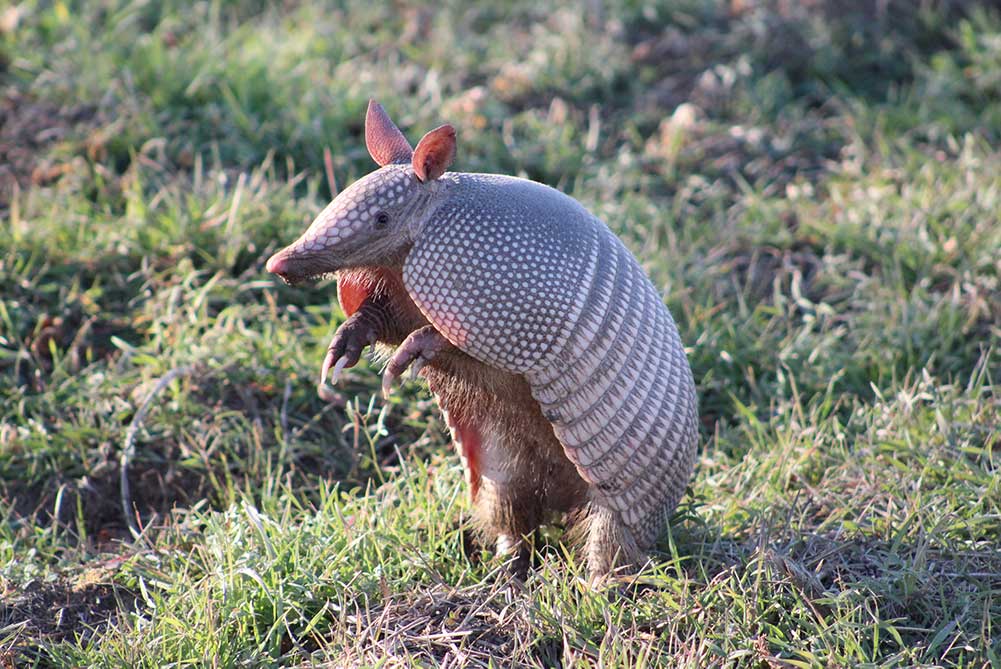
Content
Key Takeaways:
- Armadillos have a unique bony armored shell for protection and strong digging abilities.
- Armadillos prefer habitats with loose, sandy soil and access to food sources like insects.
- Armadillos primarily feed on insects but also consume fruits, berries, and small reptiles.
- Armadillo infestations can cause damage to property, landscaping, and pose health risks.
- Armadillo damage can have significant economic implications for property owners.
- Effective methods for armadillo removal include safe trapping, natural repellents, and professional control services.
- Preventing armadillo infestations involves modifying landscaping practices, regular inspections, and education within the neighborhood.
Understanding Armadillo Behavior and Habits
Armadillos are fascinating creatures that inhabit various parts of the world, particularly in the Americas. To effectively control and prevent armadillo infestations, it is crucial to have a comprehensive understanding of their behavior and habits. By delving into the biology, characteristics, habitats, and feeding patterns of armadillos, property owners can gain valuable insights into these elusive creatures.
1. The biology and characteristics of armadillos
Armadillos belong to the order Cingulata and are characterized by their unique bony armored shell, which provides them with excellent protection against predators. These adaptable mammals have a diverse range of species, each with its distinct characteristics, including different sizes, colors, and patterns on their shells.
Their digging abilities are a notable feature, as they have strong front legs and sharp claws that allow them to burrow efficiently. Armadillos also have a keen sense of smell and hearing, which aids them in foraging for food and detecting potential threats in their surroundings.
2. Armadillo habitats and why they choose your property
Armadillos are primarily found in warm, tropical, and subtropical regions, such as the southern United States and South America. They prefer habitats with loose, sandy soil that is easy to dig and provides ample access to their preferred food sources.
When armadillos invade properties, it is often because the environment meets their criteria for a suitable habitat. This includes an abundance of insects, grubs, and worms that armadillos feed on, as well as access to water sources. Improperly maintained yards with piles of debris, overgrown vegetation, and neglected gardens can attract armadillos, providing them with both food and shelter.
3. The feeding patterns and diet of armadillos
Armadillos are primarily insectivores, and their diet consists mainly of ants, beetles, termites, and other small invertebrates. They have a keen sense of smell, allowing them to detect and locate their prey easily. With their sharp, pointed snouts and long, sticky tongues, armadillos are proficient at digging and capturing insects from the soil.
Armadillos also consume other food items, such as fruits, berries, and small reptiles, depending on their availability. In their search for food, armadillos can cause significant damage to lawns and landscaping, as they dig extensive networks of burrows and forage for insects in the soil.
The Importance of Armadillo Pest Control
Armadillos may appear harmless at first glance, but their presence can have detrimental effects on your property and overall well-being. Understanding the importance of armadillo pest control is essential for property owners to take proactive measures to prevent infestations and minimize the impact caused by these creatures.
1. Damage caused by armadillos to your property and landscaping
Armadillos are known for their extensive burrowing habits, which can lead to severe damage to your property and landscaping. Their burrows can undermine the structural integrity of buildings, damage foundations, and create unsightly holes in lawns and gardens. This can be particularly problematic for properties with well-maintained landscapes or agricultural areas.
Furthermore, the constant digging and foraging activities of armadillos can disrupt root systems, uproot plants, and damage irrigation systems. This not only affects the aesthetic appeal of your property but also impacts the health and vitality of vegetation.
2. Health risks associated with armadillo infestations
While armadillos are not known to directly transmit diseases to humans, they can carry various parasites and pathogens that pose health risks. Armadillos often harbor ticks, fleas, and mites, which can then infest other areas of your property and potentially transmit diseases to humans and pets.
Additionally, armadillos can be carriers of the bacterium Mycobacterium leprae, which causes leprosy in humans. While the transmission of leprosy from armadillos to humans is considered rare, individuals should exercise caution and avoid direct contact with these animals or their burrows, especially in areas where leprosy cases have been reported.
3. The economic impact of armadillo damage on your property
Armadillo damage can have significant economic implications for property owners. The cost of repairing structural damage, reseeding lawns, replacing plants, and restoring landscaping features can quickly add up. Additionally, properties that rely on agriculture, such as farms and nurseries, can experience substantial crop losses due to armadillo foraging activities.
By investing in armadillo pest control services, property owners can mitigate these economic losses and minimize the long-term impact on their finances.
Effective Methods for Armadillo Removal
When it comes to armadillo removal, homeowners should prioritize safe and humane techniques to prevent harm to both the animals and the environment. Understanding and implementing the following methods can help effectively remove armadillos from your property:
1. Safe and humane armadillo trapping techniques
Trapping is a commonly used method to capture and remove armadillos. However, it is crucial to use humane traps and handle the captured animals responsibly. Live traps designed specifically for armadillos should be used, as they minimize the risk of injury to the animals while allowing for their safe relocation to a suitable habitat away from your property.
It is important to follow local regulations regarding trap use and consult with a pest control professional to ensure compliance with ethical and legal considerations when trapping armadillos.
2. Natural repellents and deterrents to keep armadillos away
Using natural repellents and deterrents can help prevent armadillos from invading your property in the first place. There are various commercially available repellents that utilize strong scents to deter armadillos from specific areas.
Some common repellents include predator urine, garlic sprays, and castor oil-based solutions, as these scents are known to be unpleasant to armadillos. Applying these repellents around the perimeter of your property, near potential entry points, and in areas prone to armadillo activity can discourage their presence.
3. Working with professional armadillo control services
While DIY methods can be effective for some property owners, consulting with professional armadillo control services is often the most efficient and reliable solution. Pest control professionals have specialized knowledge and experience in addressing armadillo infestations. They can provide customized strategies based on the severity of the infestation, property layout, and local regulations.
Professional armadillo control services may also offer long-term management plans that include regular inspections, preventative measures, and ongoing monitoring to ensure your property remains armadillo-free.
Maintaining an Armadillo-Free Property
To prevent future armadillo infestations and maintain a property free from these critters, implementing ongoing preventive measures is crucial. By following these tips and educating yourself and your neighbors about armadillo control, you can create an environment that is less attractive to these invasive animals:
1. Landscaping tips to discourage armadillos from invading
Modify your landscaping practices to create an environment that is less appealing to armadillos. Start by removing debris, such as piles of wood, leaves, and brush, where armadillos can hide or find shelter. Regularly mow your lawn and trim vegetation to reduce potential hiding places and discourage armadillo activity.
Consider installing a physical barrier, such as a fence made of materials that armadillos cannot dig under or climb over. This can help prevent armadillos from accessing your property and causing damage.
2. Regular property inspections and preventive measures
Conduct regular inspections of your property, paying close attention to areas that may attract armadillos. Look for signs of burrowing, such as holes in the ground or damage to the lawn. If you spot any potential entry points or signs of armadillo activity, take immediate steps to address them.
Implementing preventive measures, such as removing potential food sources like fallen fruits or berries, can also deter armadillos from settling on your property. Regularly check for insect infestations and promptly address them to minimize the attraction for armadillos.
3. Educating your neighborhood about armadillo control
Armadillos can move between properties, so it is important to educate your neighbors about the necessity of armadillo control. Encourage them to implement preventive measures and share information about the potential risks and damages associated with armadillo infestations.
Consider organizing community seminars or sharing informative materials to raise awareness and promote responsible armadillo control practices among your neighbors. Together, you can create a unified front against armadillo invasions and maintain a safe, armadillo-free neighborhood.
By understanding armadillo behavior, recognizing the importance of pest control, employing effective removal methods, and maintaining preventive measures, you can keep your property safe and armadillo-free. Consult with professionals in armadillo control services for expert advice and assistance in managing armadillo infestations. With the right strategies in place, you can protect your property and enjoy a pest-free environment.
FAQ
How do armadillos protect themselves?
Armadillos have a unique bony armored shell that provides them with excellent protection against predators.
What type of habitats do armadillos prefer?
Armadillos prefer habitats with loose, sandy soil and access to food sources like insects.
What do armadillos primarily eat?
Armadillos primarily feed on insects but also consume fruits, berries, and small reptiles.
What damage can armadillo infestations cause?
Armadillo infestations can cause damage to property, landscaping, and pose health risks.
What are the economic implications of armadillo damage?
Armadillo damage can have significant economic implications for property owners.
What are effective methods for armadillo removal?
Effective methods for armadillo removal include safe trapping, natural repellents, and professional control services.
How can I prevent armadillo infestations?
Preventing armadillo infestations involves modifying landscaping practices, regular inspections, and education within the neighborhood.
Why is armadillo pest control important?
Armadillos can cause damage to property, pose health risks, and have economic impacts, making armadillo pest control essential for property owners.

Wesley is a home improvement blogger who strives to improve his life and the lives of others. He provides homeowners with helpful tips on how to renovate their homes. His goal is not only to provide easy-to-follow instructions, but also share his own personal experiences for those seeking guidance.
